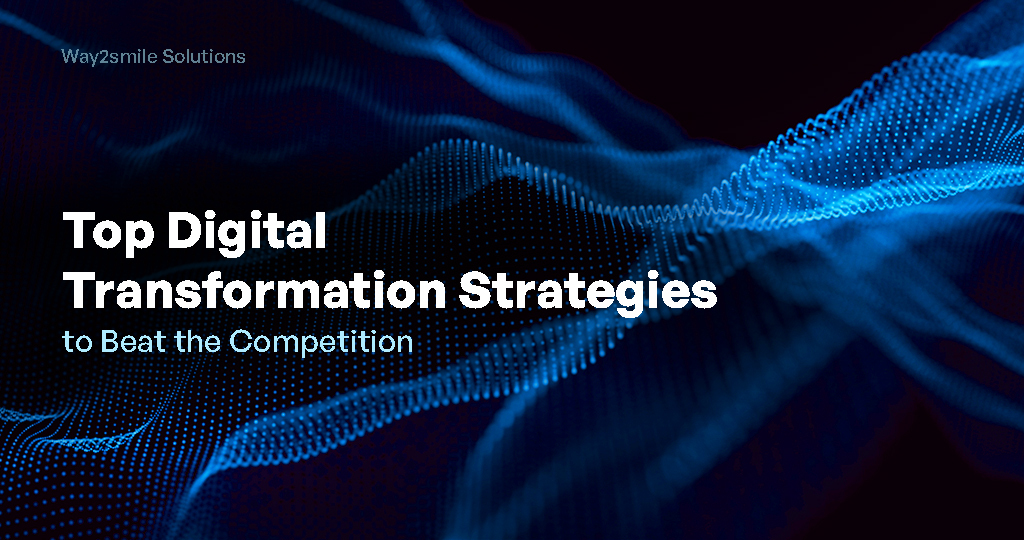As organizations strive to stay competitive in a tech-driven world, the adoption of digital transformation strategies has become paramount. In this article, we will explore the key strategies that can propel your business to new heights and ensure it stays ahead of the competition.
Key Takeaways
Prioritize customer needs with CRM, data analytics, and AI for lasting relationships and a competitive edge.
Embrace cloud solutions for flexibility, cost-efficiency, and enhanced security in IT operations.
Integrate agile and DevOps for rapid responses, resilience, and a culture of continuous improvement
Forge partnerships for shared resources, accelerating innovation and ensuring adaptability.
What is Digital Transformation?
Digital transformation is a strategic metamorphosis that leverages advanced technologies to overhaul business processes, enhance operational efficiency, and redefine customer experiences. It involves a profound integration of digital tools, data analytics, and innovative technologies throughout an organization's operations. Digital transformation is a shift from traditional, manual approaches to a dynamic, tech-driven framework. It empowers businesses to adapt to evolving market demands, improve decision-making through data insights, and foster a culture of innovation. Digital transformation is not only about adopting new technologies, it signifies a comprehensive reimagining of how businesses operate, deliver value, and engage with their stakeholders in the modern, interconnected world.
Digital Strategy vs. Digital Transformation
Digital strategy and digital transformation, though related, serve distinct purposes. A digital strategy outlines a plan for leveraging digital tools to achieve specific business goals, focusing on enhancing existing processes. On the other hand, digital transformation is a holistic and broader organizational shift. It involves a fundamental reimagining of business operations, culture, and customer experiences through technology adoption. While a digital strategy is tactical and goal-oriented, digital transformation is strategic and entails a comprehensive overhaul, ensuring long-term adaptability. Both are integral, with a digital strategy often being a component of a broader digital transformation initiative.
Phases of a Digital Transformation Strategy
Digital transformation is a multifaceted journey that typically unfolds in several key phases, each critical for ensuring a seamless and successful transition.
Assessment Phase: The initial step involves a comprehensive evaluation of the existing processes, technologies, and organizational culture. This assessment identifies areas requiring improvement and sets the foundation for strategic planning.
Strategic Planning: In this phase, organizations define their digital transformation goals, aligning them with overarching business objectives. A well-crafted strategy outlines the technologies, methodologies, and resources needed for a successful transformation.
Implementation Phase: With a strategic plan in place, organizations proceed to implement digital solutions and technologies. This involves integrating new systems, updating infrastructure, and often requires a cultural shift within the organization to embrace new ways of working.
Optimization and Continuous Improvement: Digital transformation is an ongoing process. The optimization phase involves monitoring key performance indicators (KPIs), gathering feedback, and making continuous improvements. This iterative approach ensures that the transformation remains aligned with evolving business needs and industry trends.
Cultural Integration: Cultural change is integral to digital transformation. Organizations need to foster a culture of innovation, collaboration, and adaptability to fully embrace the benefits of the digital era.
Sustainability and Scalability: Successful digital transformation is not just about immediate gains but ensuring sustainability and scalability. This phase involves embedding digital practices into the organization's DNA, ensuring long-term success and the ability to scale operations as needed. Each phase contributes to the overall success of the digital transformation strategy, with adaptability and a continuous improvement mindset serving as guiding principles throughout the entire journey.
Top Digital Transformation Strategies
Customer-Centric Approach
Prioritizing a deep understanding of customer needs and behaviors is foundational for successful digital transformation. By leveraging innovative technologies such as Customer Relationship Management (CRM), data analytics, and Artificial Intelligence (AI), organizations can unlock invaluable insights into customer preferences and trends. CRM systems facilitate efficient management of customer interactions, while data analytics unveils patterns and informs strategic decision-making. AI takes this a step further by enabling personalized customer experiences through predictive analytics and targeted recommendations. This customer-centric approach not only enhances satisfaction but also fosters lasting relationships, as businesses can anticipate and meet evolving needs. Organizations that prioritize and harness these technologies are better positioned to create a seamless and engaging customer journey, setting the stage for sustained success.
Cloud Computing Adoption
Embracing cloud-based solutions stands as a cornerstone in the digital transformation journey, offering several benefits. Migrating to the cloud provides organizations with heightened flexibility, allowing them to adapt swiftly to changing demands and scale resources seamlessly. The cost-efficiency of cloud computing is evident in its pay-as-you-go model, eliminating the need for hefty upfront investments. Real-time collaboration becomes a reality, fostering increased productivity and innovation. Moreover, cloud solutions enhance data accessibility, enabling teams to work cohesively from different locations. The security measures implemented by reputable cloud service providers ensure data integrity and protection against potential threats. In essence, the shift to cloud-based solutions not only modernizes IT infrastructures but also empowers organizations to operate more efficiently, competitively, and securely.
Agile Methodology and DevOps Practices
Making use of agile methodologies and DevOps practices is important in navigating the dynamics of digital transformation. By fostering iterative development, organizations can swiftly respond to evolving market changes, ensuring that their products and services stay aligned with customer needs. Continuous integration, a core tenet of DevOps, streamlines the development process by enabling seamless collaboration among cross-functional teams. Rapid deployment further accelerates time-to-market, allowing organizations to capitalize on emerging opportunities. This combined approach not only enhances the speed of delivery but also cultivates a culture of continuous improvement and adaptability. Ultimately, integrating agile and DevOps principles positions organizations to achieve unparalleled responsiveness, resilience, and overall agility.
Data-Driven Decision-Making
Harnessing the power of data analytics is an amazing strategy for organizations seeking to thrive in today's digital business environment. By using advanced data analytics tools, businesses can go through vast datasets to make well-informed decisions, identify emerging trends, and predict future outcomes. This data-driven approach, enhanced by intelligent data-virtualization, not only provides a comprehensive understanding of market dynamics but also empowers organizations to stay ahead of the curve. The ability to extract actionable insights from data facilitates proactive decision-making, allowing for timely responses to changing market conditions. Data analytics transform raw information into a strategic asset, enabling businesses to navigate uncertainties, identify opportunities, and maintain a competitive edge.
Cybersecurity Measures
Cybersecurity is a non-negotiable element where threats to sensitive data are at large. To fortify digital systems, organizations must employ a multi-faceted approach. Implementing encryption protocols shields data from unauthorized access, ensuring its confidentiality and integrity. Introducing multi-factor authentication adds an additional layer of security, removing unauthorized entry even in the event of compromised credentials. Regular security audits are important, offering a proactive stance against potential vulnerabilities. These audits not only identify existing weaknesses but also enable organizations to address and fortify their defenses. A comprehensive cybersecurity strategy, featuring encryption, multi-factor authentication, and regular audits, is indispensable for safeguarding sensitive information and maintaining the trust of stakeholders.
IoT Integration
The Internet of Things (IoT) has become a very important component, creating a new era of connectivity and real-time data exchange. Integrating IoT into business operations goes beyond technological adoption, it transforms how organizations operate and innovate. This integration not only enhances operational efficiency by providing real-time insights but also facilitates predictive maintenance, ensuring responses to potential issues before they escalate. Moreover, IoT creates opportunities for groundbreaking products and services, as the seamless connectivity between devices opens new avenues for innovation.
Artificial Intelligence and Machine Learning
By employing AI for automation, organizations streamline workflows, reduce manual efforts, and enhance overall operational efficiency. Predictive analytics, powered by machine learning algorithms, enables businesses to anticipate trends, identify opportunities, and make informed decisions, thereby staying ahead in their respective markets. Moreover, AI-driven insights extend to personalized customer experiences, tailoring products and services to individual preferences. This not only supports customer satisfaction but also cultivates brand loyalty. Overall, integrating AI and machine learning into various business functions becomes a catalyst for progress, driving continuous improvement, and positioning businesses at the forefront of technological innovation.
Robotic Process Automation (RPA) Incorporating Robotic Process Automation (RPA) into operational frameworks is a game-changer, automating mundane, rule-based tasks and liberating human resources for more strategic and creative pursuits. RPA not only expedites routine processes but also ensures accuracy and consistency, minimizing errors inherent in manual tasks. By offloading repetitive responsibilities to automated systems, organizations unlock human potential for higher-value activities, encouraging strategic thinking, creativity, and problem-solving. This transition elevates productivity levels as human capabilities are redirected towards tasks that demand critical thinking and innovation.
Digital Skills Development Strategic investment in training and upskilling is important to equip employees with essential digital skills, forming the bedrock of a successful digital transformation. In an era defined by technological advancements, a digitally literate workforce becomes the keypoint for organizational progress. Training initiatives should include a spectrum of digital competencies, from data analytics to cybersecurity. This proactive approach not only improves the organization against skill gaps but also cultivates an innovative culture. A digitally fluent workforce is better positioned to harness emerging technologies, driving efficiency, and contributing meaningfully to the overarching goals of digital transformation.
Collaborative Ecosystems
Cultivating partnerships and collaborations with diverse entities such as other organizations, startups, and technology providers nurtures innovation and expanding influence. Establishing a collaborative ecosystem creates a synergistic environment wherein shared resources, expertise, and novel ideas flourish. Through partnerships, organizations can tap into complementary strengths, accelerating the development of innovative solutions and enhancing their competitive edge. Moreover, collaborations provide access to a broader network, enabling shared insights and opportunities for mutual growth. This collaborative approach not only supports a culture of innovation but also positions businesses to navigate the complexities of the digital terrain more effectively, ensuring adaptability and relevance.
Wrapping Up
Staying ahead of the competition requires a strategic and holistic approach to transformation. By prioritizing customer-centricity, leveraging cloud computing, embracing agile methodologies, making data-driven decisions, and fortifying cybersecurity measures, organizations can position themselves as leaders in their respective industries. Digital transformation is not a one-time project but an ongoing journey, and those who master it will thrive. As businesses begin their digital transformation journey, it is important to partner with experienced solution providers who understand the intricacies of digital transformation strategies. Way2Smile Solutions, a leading software development company, specializes in providing innovative and advanced digital transformation solutions. We empower businesses to seamlessly integrate digital strategies, enhance operational efficiency, and stay ahead in the competition.







